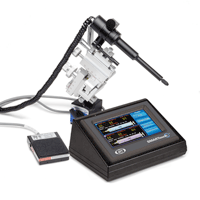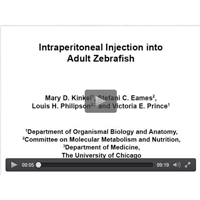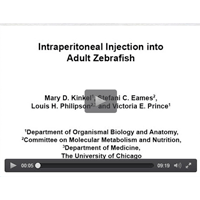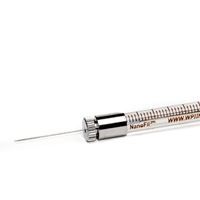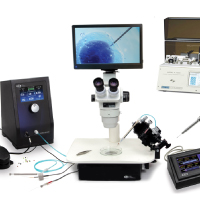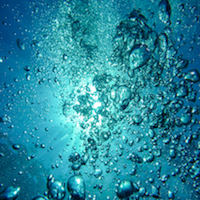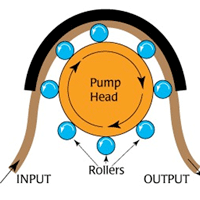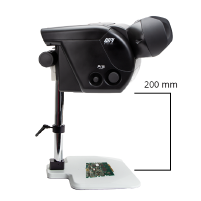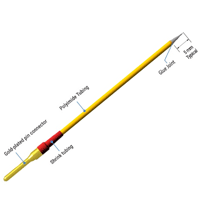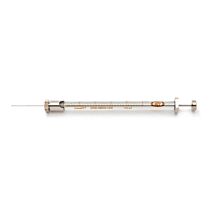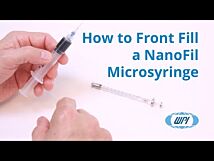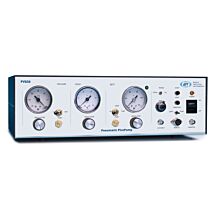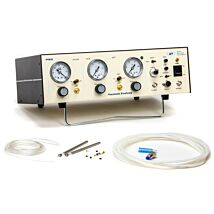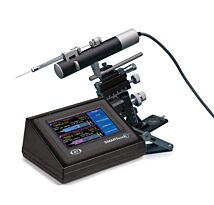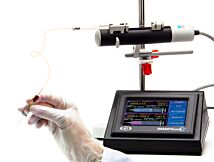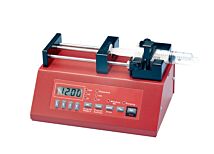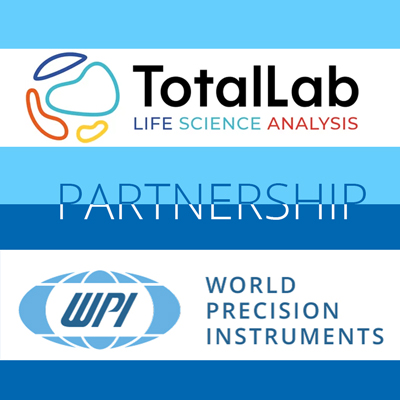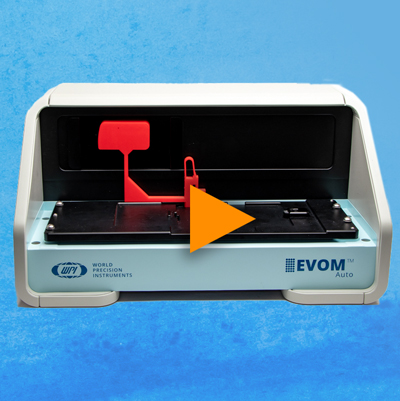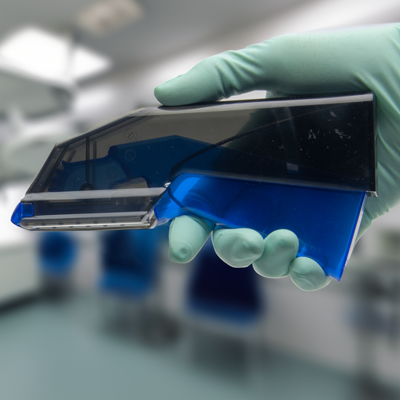This website uses cookies to ensure you get the best experience on our website.
Read more
WPI Products for Microinjection
May 02, 2013
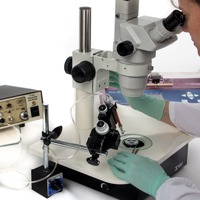
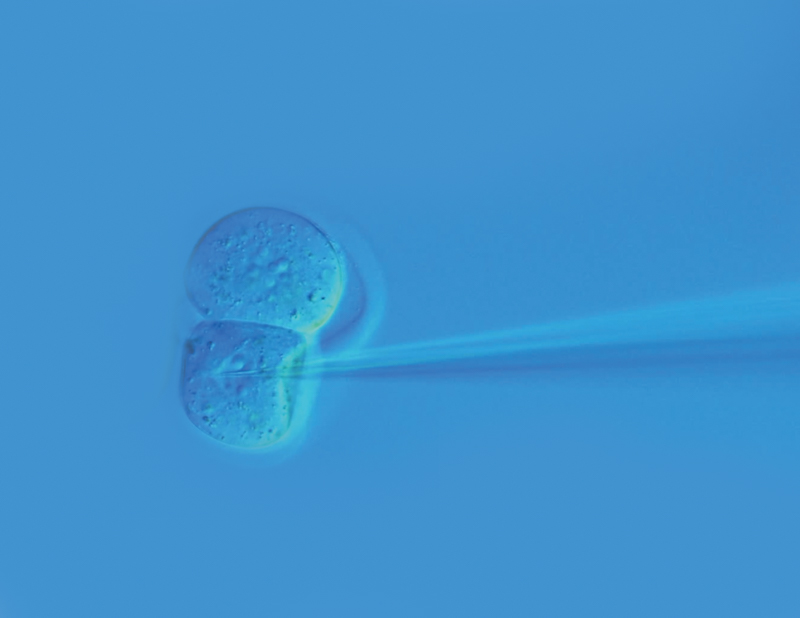 Microinjection uses either a metal needle or a glass micropipette to inject small liquid volumes. For example, genetic material may be inserted into a living cell, a drug introduced into an eye or brain, or fluid injected into a muscle. Typically, microinjection is performed under a microscope. A stereotaxic setup may be required.
Microinjection uses either a metal needle or a glass micropipette to inject small liquid volumes. For example, genetic material may be inserted into a living cell, a drug introduced into an eye or brain, or fluid injected into a muscle. Typically, microinjection is performed under a microscope. A stereotaxic setup may be required.
WPI offers a variety of pumps along with special syringes, stereotaxic frames, glass capillaries and needles. Here we will highlight our microinjection pumps. The setup you choose depends on the size of injection aliquots, the volume to be injected and the size of needle or glass tip chosen. The products described below are listed in order by the smallest volume they can inject. See the comparison chart below or the related post links at the bottom.
Pressure Injectors
WPI's new generation of pressure microinjectors are quickly replacing the very popular legacy line of pnuematic valve PicoPumps Pressure Injectors. The three new injectors facilitate any type of microinjecion that involves glass micropipettes.
- MICRO-ePUMP - Microinjector with Integrated Cell Penetrator and Internal Pressure Source
- μPUMP - Microinjector with Internal Pressure Source
- PV850 - Microinjector for Use with External Pressure Source
PV830, the legacy Pneumatic PicoPump, was designed to simplify intracellular injection. You get repeatable microinjection in volumes ranging from picoliters to nanoliters. PV830 offers eject and hold pressure. The hold pressure prevents backfilling of the pipette by capillary action. In addition, the PV830 also has vacuum pressure which allows you to securely hold a cell with one pipette while you inject it with another. The volume injected is controlled by the inside diameter of the glass tip, the pressure and the time. This pump can inject fluids in the picoliter to microliter ranges.
UMP3
UMP3 was the first micro syringe pump on the market, and design improvements ensure it remains the best choice for stereotaxic brain injection applications. It is a motorized syringe pump that accepts syringes from 0.5µL–1mL. Using a 10µL syringe, the actual practical minimum volume is 25nl. For intuitive, intelligent control, the UMP3 is combined with the Micro2T SmarTouch controller. It is built with extremely tight tolerance for high accuracy. It can be attached to the M3301 manual micropositioner or any manual stereotaxic manipulator.
Nanoliter 2020
NANOLITER2020 is the updated version of WPI’s popular NANOLITER2010 Injector that is capable of performing precision injections in the nanoliter range using a variety of glass micropipette sizes. The new model connects directly to the WPI MICRO2T SMARTouch™ controller, which can also be used with WPI’s UMP3 pump, allowing the pumps to be controlled individually or synchronously. The new injector head has a LED indicator which shows proper communication between the pump and controller. NANOLITER2020 offers improved precision by in-depth plunger displacement validation. The system is easier to use and has a chic silver injector head. The NANOLITER2020 system is perfect for oocyte injection and applications involving injections as small as 6nL. It offers fast, accurate aliquot injections. It works with glass pipettes. It is back filled with oil, the oil is nearly pressed out, and then it is front filled with the injection fluid. The maximum volume is limited by what the glass pipette can hold.
Manual Microsyringe Pumps
The MMP and DMP systems are manual microsyringe pumps. They use a manual micrometer to eject the fluid. The DMP micrometer has a digital display. Both use glass micropipettes. These are simple, hand operated systems for perfusion or withdraw of fluids.
Accessories for Microinjection
NanoFil™
NanoFil, combined with and RPE or I/O kit, is the world's smallest dead volume (2.7µL) injection syringe system when the 10μL NanoFil syringe is used with WPI needles 33-36g. This is an accessory which may be used with a UMP3
It can be operated by hand or used with the MMP, DMP or UMP3 pumping systems. The RPE and I/O kit contains Silflex tubing that has 2.74µL dead volume. The NanoFil with a needle has a dead volume of the needle which can be as low as 1.5nL. It is excellent for low volume injections and syringe filling when back filling is undesirable. A common application is ocular injections. Two syringes are available (10µL and 100µL), and the syringes can be adapted to Silflex tubing. Silflex is a plastic-coated, glass tubing that is flexible and durable. It has a tiny diameter for low volume. It is 35cm long and offers some freedom of movement when performing injections by hand. Other options for NanoFil include the two injection kits, IO-KIT for inter ocular injections and the RPE-KIT for retinal pigment epithelial injections.
Comparing WPI Pumps
| Order code | Application | Needles |
Glass |
Inject Volume |
Benefits |
| MICRO-ePUMP, μPUMP, PV850 | |||||
| MICRO-ePUMP Pressure Microinjector with integrated cell penetrator and internal pressure source | Intracellular injection (pL range) | ✓ | Microliter to picoliter range |
Integrated Cell Penetrator technology |
|
| μPUMP Pressure Microinjector with internal pressure source | Intracellular injection (pL range) | ✓ | Microliter to picoliter range | Convenient internal pressure source Intuitive user interface Small footprint Touch screen High precision for reproducible injections |
|
| PV850 Pressure microinjectors for use with external pressure source | Intracellular injection (pL range) | ✓ | Microliter to picoliter range |
Intuitive user interface |
|
| PV830 (Legacy) | |||||
| Pneumatic picopump with vacuum pressure | Intracellular injection (pL range) | ✓ | Picoliter to nanoliter range | Injection volume depends on tip ID, pressure and time. Very small cell injections Needle tips (glass) down to 0.1µm. Hold a cell with one pipette while injecting with the second |
|
| PV820 (Legacy-Discontinued) | |||||
| Pneumatic picopump | Intracellular injection (pL range) | ✓ | Picoliter to nanoliter range | Injection volume depends on tip ID, pressure and time. Very small cell injections Needle tips (glass) down to 0.1µm |
|
| UMP3 | |||||
| Motorized syringe pump | Sterotaxic brain injection | ✓ | ✓ | Practical: 25nL-10ul (using 10µL syringe) | Pulse-free delivery Simple setup Crafted with fine tolerance specifications for accuracy |
| NANOLITER2020 | |||||
| Micro-processor, piston displacement injector | Oocyte injection | ✓ | 6–4200nL (Volume available is limited to the amount the glass micropipette can hold) Rapid injection of hundreds of samples with repeatability |
Highly accurate Fixed 2.3–69nL aliquots (up to 5µL using the Micro4 controller) |
|
| DMP | |||||
| Manual micro syringe pump with digital micrometer | Manual injection of small amounts | ✓ | ✓ | 10nL–µL, depends on the syringe used | Accurate, hand-operated Accepts100µL-1mL syringes Digital readout on the micrometer |
| MMP | |||||
| Manual micorsyringe pump with micrometer | Manual injection of small amounts | ✓ | ✓ | 10nL–µL, depends on the syringe used | Accurate, hand-operated Accepts 100µL-1mL syringes |
| NanoFil |
|||||
| Smallest dead volume injection syringe | Low volume injections (for example, ocular injections) | ✓ |
✓ (When used with the NFINHLD-G10 holder) |
Smallest dead volume Durable, flexible Needle sizes from 26–36 ga. Blunt, sharp or beveled Use it to move fluid into needles to get rid of air space and bubbles. Options: Pump by hand or with the MMP, DMP, UMP3 |
|

Close


